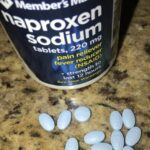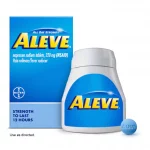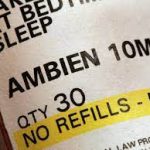Can I Take 2 Aleve Pills At Once?

When one seeks medical attention, the first and foremost task handed to the physician is to assess the patient’s medical history and then prescribe an appropriate personalized medical regimen. Be it infectious diseases, chronic conditions, or metabolic disorders, prescription of medication is only the first step of proceedings. It is equally upon the patient, as much as it is upon the doctor and healthcare professionals examining him, to stick to his or her prescribed routine and get a follow-up check done on a regular basis.
The dose is the amount of drug taken at any one time. This can be expressed as the weight of the drug (e.g. 250 mg), the volume of drug solution (e.g. 10 mL, 2 drops), the number of dosage forms (e.g. 1 capsule, 1 suppository), or some other quantity (e.g. 2 puffs). The dosage regimen is the frequency at which the drug doses are given. Examples include 2.5 mL twice a day, one tablet three times a day, and one injection every four weeks.
The total daily dose is calculated from the dose and the number of times per day the dose is taken while the optimal dosage is the dosage that gives the desired effect with minimum side effects. There are many factors taken into consideration when deciding the dose of a drug – including the age of the patient, weight, sex, ethnicity, liver and kidney function, and whether the patient smokes. Other medicines may also affect the drug dose. Adherence and compliance are pivotal in ensuring an improved health outcome for the patient especially if he is suffering from a chronic condition and needs prolonged medical attention.
What is Aleve?
Aleve is one brand of the over-the-counter drug naproxen sodium 220 milligrams (mg). It treats many types of mild pain. You may have taken it to treat your headaches, menstrual cramps, arthritis, muscles aches, toothaches, backaches, and even mild fever.
Although Aleve can bring relief, it can also cause side effects. Some of these side effects can happen just from short-term use. Long-term use of Aleve can also cause other side effects. Some people are at greater risk of Aleve’s side effects because of certain medical conditions that they have.
How Aleve works
Aleve, or naproxen sodium 220 mg, is the over-the-counter version of naproxen sodium 275 mg, which is available by prescription only. Aleve is closely related to naproxen base 250 mg, also prescription only.
Both Aleve and its prescription counterparts belong to a class of medications called nonsteroidal anti-inflammatory drugs (NSAIDs). These drugs reduce pain and fever by preventing your body from making prostaglandins. Prostaglandins are substances your body produces when tissues of your body are injured. These substances contribute to many of the effects of inflammation, including swelling, fever, and pain. Inhibiting your body’s production of prostaglandins can help prevent pain and other effects related to inflammation. But it can also interfere with some other functions.
How should this medicine be used?
Aleve comes as a tablet, a capsule, and a gel capsule to take by mouth. It is usually taken with a full glass of water every 8 to 12 hours as needed. Aleve may be taken with food or milk to prevent nausea.
Adults and children over 12 years old: Take 220 mg (1 tablet) by mouth every 8 to 12 hours as needed. Do not take more than 600 mg (3 tablets) of Aleve in a 24-hour period.
Children under 12 years old: Contact your child’s provider. There might be better options to treat your child’s symptoms.
Follow the directions on the package or prescription label carefully, and ask your doctor or pharmacist to explain any part you do not understand. Take naproxen exactly as directed. Do not take more or less of it or take it more often than prescribed by your doctor or written on the package.
Prescription naproxen comes as a regular tablet, a delayed-release (a tablet that releases the medication in the intestine to prevent damage to the stomach) tablet, an extended-release (long-acting) tablet, and a suspension (liquid) to take by mouth. The extended-release tablets are usually taken once a day. The tablets, delayed-release tablets, and suspension are usually taken twice a day for arthritis. The tablets and suspension are usually taken every 8 hours for gout, and every 6 to 8 hours as needed for pain. If you are taking naproxen on a regular basis, you should take it at the same time(s) every day.
Swallow the delayed-release tablets and extended-release tablets whole; do not split, chew, or crush them.
If you are taking Aleve to relieve the symptoms of arthritis, your symptoms may begin to improve within 1 week. It may take 2 weeks or longer for you to feel the full benefit of the medication.
Stop taking Aleve and call your doctor if your symptoms get worse, you develop new or unexpected symptoms, the part of your body that was painful becomes red or swollen, your pain lasts for more than 10 days, or your fever lasts for more than 3 days.
Can I take 2 Aleve at once?
No, Aleve is the longest-lasting over-the-counter non-steroidal anti-inflammatory drug (NSAID) currently available, serious side effects can happen if you take 2 Aleve at once. You can experience serious internal stomach bleeding or tears in the stomach lining. It’s also possible to experience kidney failure if you take too much of this medication. Symptoms of Aleve overdose include nausea, stomach upset, heartburn, drowsiness, seizures, agitation, confusion, incoherence, blurred vision, and coma. These effects can be fatal and can happen without warning.
In case of overdose, call the poison control helpline at 1-800-222-1222. Information is also available online at https://www.poisonhelp.org/help. If the victim has collapsed, had a seizure, has trouble breathing, or can’t be awakened, immediately call emergency services at 911.





